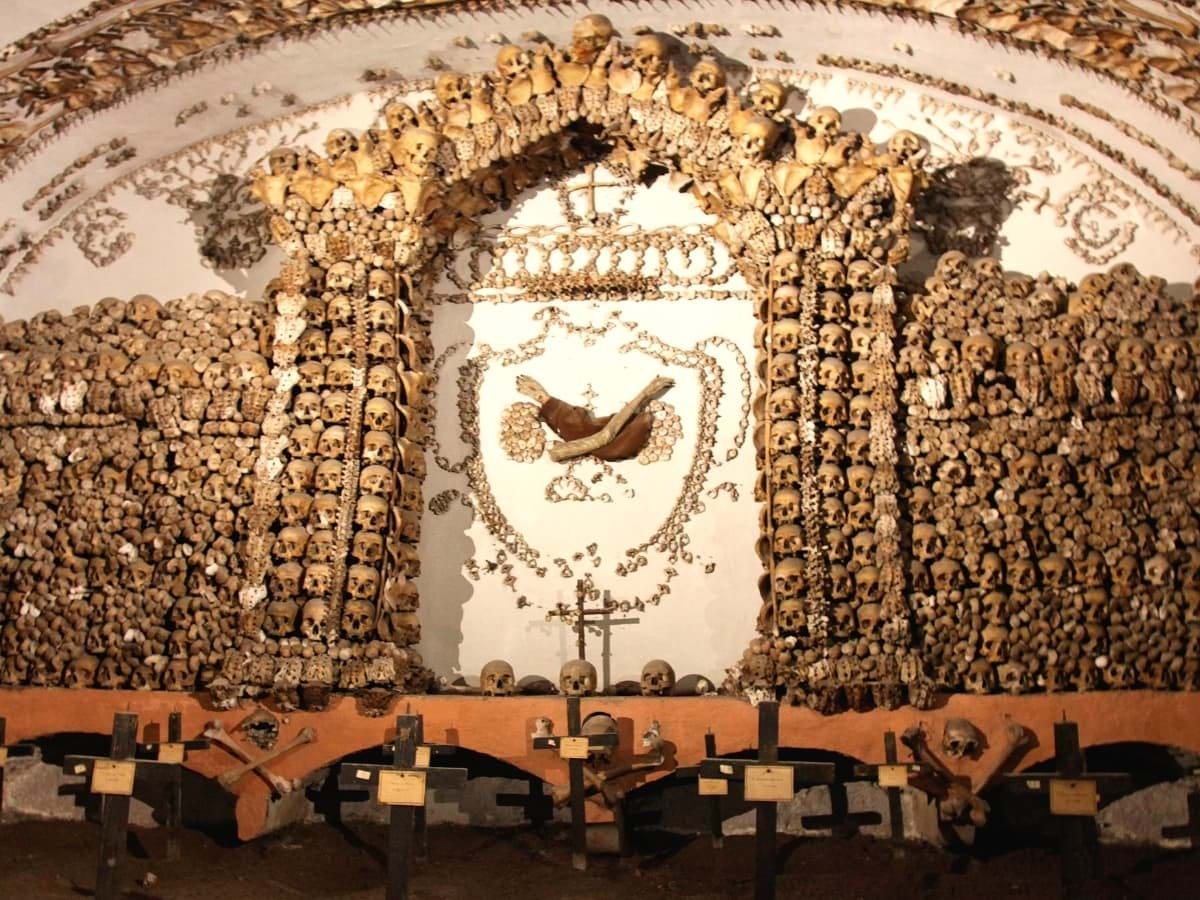Exploring Rome’s darker side, whether for a few hours or a whole day, will let you roam the city’s catacombs and crypts to your heart’s delight. While some of the sights you’ll see may be macabre, all are fascinating. You’ll emerge back into the bustling life and light of Rome with even more respect for the living!
The catacombs leave you in no doubt that the Eternal City is as intriguing underground as it is above. Located on the outskirts of the city, the catacombs house centuries-old burial chambers and early examples of Christian art. Occasionally their locations also intersect with ancient pagan sites, adding another layer to their mystery and another experience of Rome’s antiquity for you.

Rome's Ancient Catacombs
Rome’s Christian and pagan communities were prevented, by various laws and rules, from burying their dead within the city. In addition to governing laws, the price of land was also prohibitive, and as such, “death practices” evolved where burials took place away from the urban center. Instead, burials took place beyond the city’s Via Appia Antica (the Old Appian Way) outside of the boundary walls of Rome.
Various catacombs exist beneath the capital city’s streets, including:
- St. Callixtus Catacombs - this catacomb, at nearly 12 miles long and 20 meters deep, is the largest catacomb below Rome. Nine popes are buried here including Pope Pontian, who was Pope from 230 AD to 235 AD. The catacomb also houses examples of early Christian art, including sculpture, frescoes and paintings.
- St. Sebastian Catacombs - a smaller catacomb that the St. Callixtus one at nearly seven miles long, this catacomb is home to some of the earliest Christian graffiti, in the form of prayers to the apostles, that exists in the world.
- St. Domitilla Catacombs - this catacomb is the oldest of all of Rome’s underground burial chambers and is accessed through a church that dates from the 4th century. A fresco, painted in the second century, of the Last Supper is to be found here.

The Capuchin Crypt in Rome
One of the most astounding sights to see on the Rome catacomb tours is the remains of an estimated 4,000 monks buried in the Capuchin Crypt in Rome.
This burial chamber can feel quite spooky, but it’s also a timely reminder of our fleeting time on earth. The Capuchin Crypt holds 500 years of history of the Capuchin Order within its walls, and entrance to the crypt is gained beneath the Capuchin Church of the Immaculate Conception, which was built in 1645.
Considered to be a memento mori (a reminder of death), the crypt is divided into six smaller crypts and named after the bones used to decorate them. The bones have been used to create objects, including tables, clocks and chandeliers, and the crypts are named as follows:
- Crypt of the Skulls
- Crypt of the Pelvises
- Crypt of the Leg Bones and Thigh Bones
You also have:
- Crypt of the Resurrection - this crypt houses a painting of Jesus raising Lazarus from the dead. The frame of this picture is made out of bones.
- The Mass Chapel - this is the chapel where Mass was celebrated and doesn’t contain bones.
- Crypt of the Three Skeletons - this crypt houses a highly symbolic trio of skeletons with the central skeleton holding a scythe in its right hand, to depict how death comes for every person, and a scale in its left hand, to symbolize the deeds of the individual, both good and bad, that will be judged by God on Judgement Day. In this crypt, there’s also a chilling reminder, spelled out in bones, in five languages, that says, “What you are now we used to be; what we are now you will be...”
It’s in the Capuchin Crypt that you’ll see the Skull and Crossbones sign, which is now accepted as a warning sign for dangerous chemicals or of live electricity, or other dangers, across the world. In the crypt, of course, you’ll find the real deal - a Skull and Crossbones sign made out of real bones.

One of Rome's Biggest Attractions
Embarking on a Rome catacomb tour is one of the most intriguing experiences you can have in Italy. While not ideal for children under ten or anyone with a fear of small spaces, the catacombs and crypts are spellbinding and show just how apt the “eternal” part is of Rome’s alternative name, the Eternal City.
To discover more about the darker side of Rome, read more about our Catacombs and Crypts tours.


